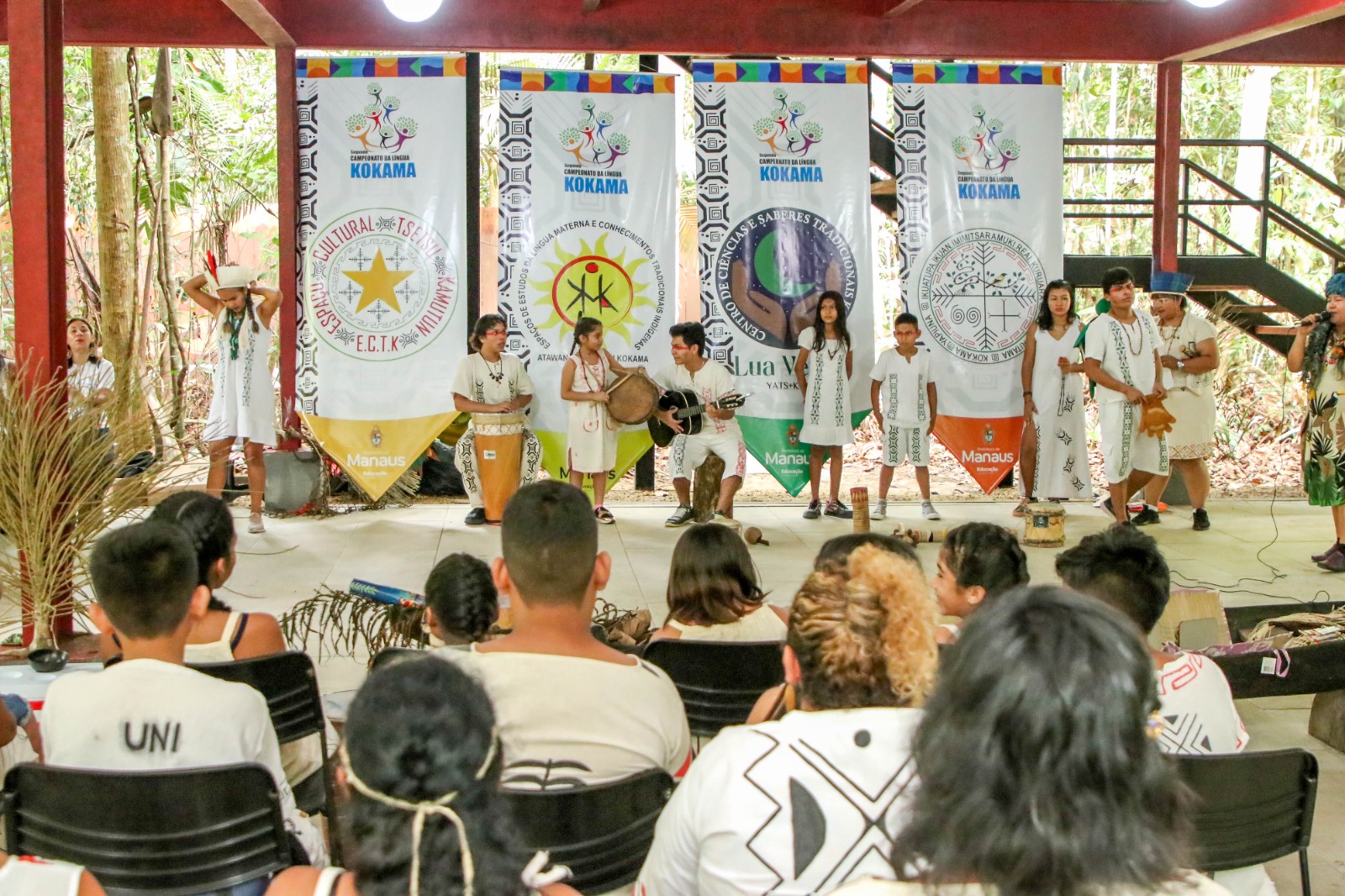Linguistic biodiversity, the climate crisis and the preservation of ancestral knowledge
Indigenous languages are part of Brazil’s national heritage and are threatened with extinction. In 50 years, around 20 languages could disappear, according to experts. Faced with the imminent loss of this immense wealth of expression from peoples and societies, the International Decade of Indigenous Languages (DILI) was established by the United Nations General Assembly for the 2022-2032 decade. Check out the article by University of Brasília professor Altaci Corrêa, exclusively for the G20 Brasil website.

Although indigenous peoples represent 6% of the world's population, it is the original populations that are mainly responsible for global linguistic diversity, as they speak more than four thousand of the world's 6.7 thousand languages. However, it is estimated that more than half of all languages will no longer be spoken by the end of this century. According to article 28 of the 1989 ILO Convention 169, “provisions must be adopted to preserve the indigenous languages of the peoples concerned and to promote their development and practice”.
Faced with the imminent loss of the immense wealth of possibilities for expression of peoples and societies, the International Decade of Indigenous Languages (DILI) was established by the United Nations General Assembly for the decade 2022-2032. The decision was taken at the end of the International Year of Indigenous Languages in 2019, following demands by the indigenous peoples of Bolivia, who understood the importance of effective and continuous action towards the recognition, valuing and survival of indigenous languages around the world.
Linguistic diversity is fundamental to the conservation of biological diversity on the planet. Brazil, which is among the world’s 10 countries with the most linguistic diversity, is also the country with the greatest biodiversity. There are more than 116 thousand animal species and over 46 thousand plant species known in the country, all spread across six terrestrial biomes and three large marine ecosystems. The ancestors of the original peoples living in the current Brazilian territory have been working continuously and consistently in the territory's biomes for at least 6 thousand years.
In indigenous languages, there are species inventories, classification systems, etiological narratives and, most of all, forms of diversity management, a fundamental technology for environmental preservation and biorestoration. Linguistic loss implies a loss of knowledge that is decisive to confronting the contemporary climate and environmental crises.
Indigenous languages are the great code and repository of knowledge about the Amazon, the Pantanal, the Atlantic Forest, the Cerrado, the Caatinga and the Pampa. They are ancestral languages precisely because they result from long and profound human coexistence in specific environments—and this led to highly specialized knowledge. In indigenous languages, there are species inventories, classification systems, etiological narratives and, most of all, forms of diversity management, a fundamental technology for environmental preservation and biorestoration. Linguistic loss implies a loss of knowledge that is decisive to confronting the contemporary climate and environmental crises.
According to Brazil’s National Historical and Artistic Heritage Institute (Instituto do Patrimônio Histórico e Artístico Nacional/IPHAN), an estimated 250 languages are spoken in the country, of which around 2/3 (approximately 160) are Amerindian languages. This is both numerical and genetic diversity, since these languages belong to approximately two dozen distinct linguistic families. They are presently undergoing different stages of description and documentation, and the intergenerational transmission of many of them is threatened. The Covid-19 pandemic, which mainly killed elders and indigenous leaders, revealed the vulnerability of most original languages that count on the elderly population as their main speakers and memory-bearers.
Therefore, the linguistic issue must be included in emergency actions taken to protect indigenous peoples and the territories of which they are the guardians. It is essential to promote diagnoses of the linguistic vitality of each and every indigenous community; documentation and description of languages; support to linguistic strength and to initiatives towards its recovery, as well as the creation of Ancestral Language Centers that promote indigenous knowledge in original languages, with emphasis on ethnosciences and digital inclusion.
These are all language policies put forward by Brazil’s Ministry of Indigenous Peoples (Ministério dos Povos Indígenas) through its Department of Languages and Memories. However, these initiatives require funding and budgetary commitment from all the beneficiaries of indigenous knowledge. Thus, the creation of the International Fund for the Promotion of Indigenous Languages is strongly recommended to ensure the implementation of policies and actions to value indigenous languages in countries that are strategic to linguistic diversity and biodiversity across the planet, such as Brazil.
Altaci Corrêa Rubim/Tataiya Kokama is a researcher at the University of Brasília’s Department of Linguistics, Portuguese and Classical Languages—which belongs to the Institute of Letters. She is co-chair of the Global Working Group for the Decade of Indigenous Languages at UNESCO and general coordinator of Indigenous Educational Policy Articulation at the Ministry of Indigenous Peoples.
The Kokama language was classified as part of the Tupi-Guarani family, Tupi trunk, and the Kokama population is distributed across communities in the upper and middle Solimões River in Amazonas.